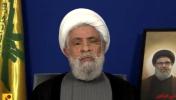

Hezbollah’s latest declaration that it will not disarm arrives at a moment when the regional landscape is shifting—sharply and decisively—in Israel’s favor. After months of precision operations along the northern front, Israeli strategy has entered a new phase: broader, synchronized strike packages designed to dismantle Hezbollah’s military infrastructure and restore long-term deterrence. Senior officials expect the operational tempo to increase in the coming weeks, a move intended to force a strategic choice on Hezbollah—either stand down or trigger a confrontation for which Lebanon is in no condition to endure.
The timing is critical. The current arrangement governing Hezbollah’s conduct in southern Lebanon expires at the end of December. With that deadline approaching, messages circulated between Jerusalem and Beirut following tonight’s broadcast. Lebanon informed Israel that it intends to spend 2025 clearing Hezbollah’s military presence from the south, finally fulfilling obligations it has ignored for nearly two decades. Israel responded with unmistakable clarity: If Lebanon fails, 2026 will not be another year of warnings but a year of “broad mowing,” a term used by officials to describe large-scale, continuous operations meant to permanently degrade an enemy’s capabilities.
Inside Israel, the cabinet convened for an extended discussion focused almost entirely on the Lebanese theater. The consensus was clear—deterrence must be restored, and the north cannot return to the pre-conflict status quo. The Trump Administration, now firmly aligned with Israel’s security priorities, continues to apply pressure on Beirut to fulfill its commitments under U.N. Resolution 1701. Washington has privately signaled that Hezbollah’s armed control of southern Lebanon is no longer a regional reality the U.S. is prepared to tolerate.
Yet Hezbollah continues to posture. The group’s newly released video montage—brimming with battlefield footage and speeches—was crafted to project confidence and resistance, directly challenging the ceasefire’s requirement that it disarm south of the Litani River. Far from demonstrating strength, the montage underscores Hezbollah’s growing anxiety as Israel tightens the noose around its military assets and as international patience with the group’s destabilizing role wears thin.
Negotiations that stalled in November 2025 remain frozen, with Lebanese officials publicly insisting the country will disarm Hezbollah by year-end. But Hezbollah’s refusal places Lebanon on a collision course not only with Israel, but with its own people, who fear renewed conflict and deepening civil unrest. Lebanon’s economic collapse has left the nation unable to absorb another war launched on behalf of Tehran’s proxy.
In the end, the path forward is being shaped not in Beirut or by Hezbollah’s rhetoric, but by Israel’s clear strategic doctrine and the Trump Administration’s firm backing. Unless Hezbollah reverses course, Israel’s northern front will not quiet down—it will escalate, deliberately and decisively, until the threat is neutralized. The timeline is narrowing, and Hezbollah’s defiance is pushing the region closer to a reckoning long overdue.
גאלערי
ווידעאס